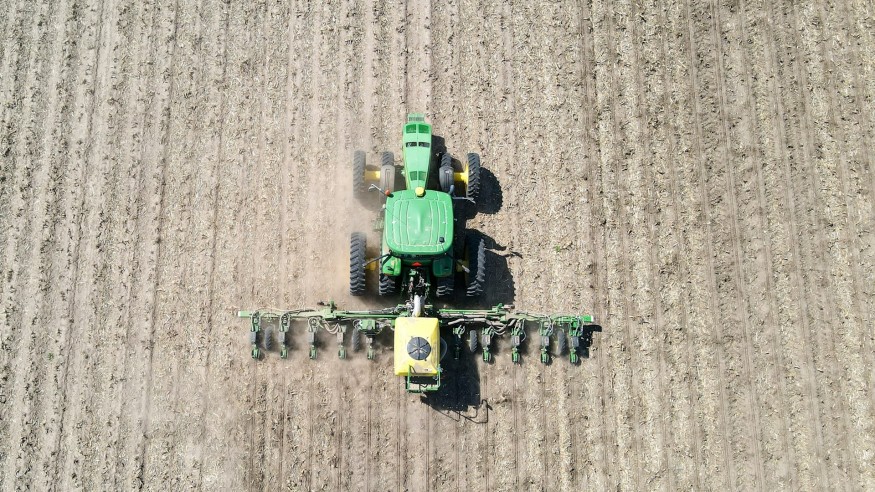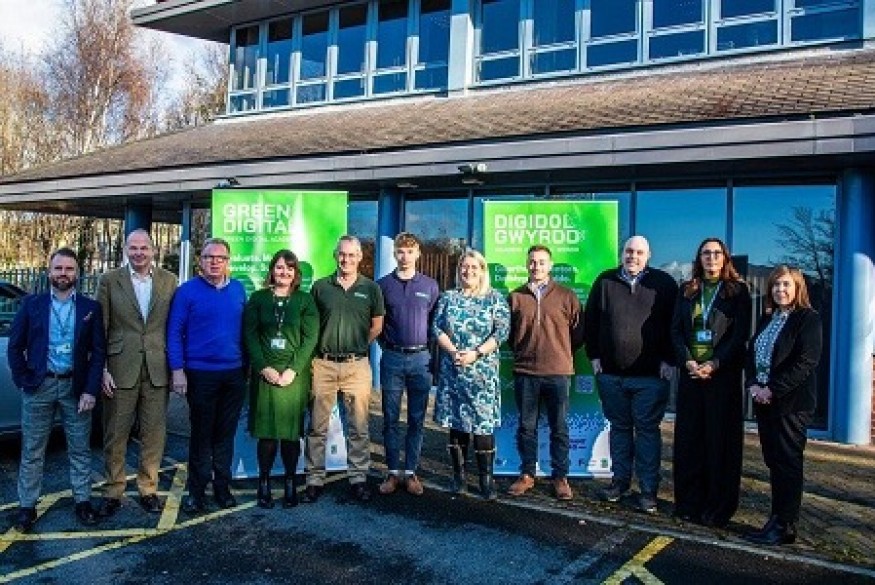
June 11, 2025 - 523 views
Trials have been conducted to de-risk automation in agriculture and showcase its potential benefits.
The University of Sheffield Advanced Manufacturing Research Centre (AMRC) Cymru, partnered with Grŵp Llandrillo Menai’s agricultural campus, Glynllifon, to test autonomous technology in farming operations.
The agricultural sector is under increasing pressure to produce high-quality, low-cost food, whilst reducing environmental impact; automation is a key enabler to this but isn’t being adopted at the rate it could be.
Amongst a host of challenges, two key aspects compound the pressures faced in agriculture: labour shortages and consistency of operations. Looking to answer key questions around the real-world benefits of automating in-field operations, grassland management in particular, the partnership looked to AMRC Cymru’s in-field autonomous tractor - AgBot, the purchase of which was funded by the Welsh Government.
Through two field level trials, the team wanted to provide an evidence-based evaluation of autonomous technology in agriculture, reflecting both advantages and disadvantages to empower farmers with a deeper understanding of automation’s potential effects on efficiency, practical use, sustainability and environmental impact.
They also wanted to raise awareness of autonomous farming technologies and the potential applications, to pique curiosity and boost interest in automation within the Welsh grassland and livestock agriculture sector, improving the potential for engagement between end users, technology developers, and academia and research organisations to create opportunities for future collaboration and development.
For Alex Lewis, manufacturing engineering lead at AMRC Cymru, the RASART project represents a significant step forward in understanding the real-world potential of autonomous systems within UK agriculture.
He said: “While the trials importantly highlighted areas for future development, the evidence-based evaluation provided valuable insights into the advantages and disadvantages of automation for both today and looking to the future, ultimately empowering farmers with a deeper understanding of its potential impact on efficiency and sustainability.
“This project underscores the importance of collaborative efforts between research organisations like AMRC Cymru, agricultural colleges like Glynllifon and technology providers, in driving innovation and shaping the future of farming in the UK.”
Both trials observed the completion of two common grassland operations - mowing and cultivating - executed by three tractors with varying degrees of automation technologies: fully autonomous, semi-autonomous and fully manual. The Fendt Vario 516 tractor was chosen due to its similar size and technical specification to the AgBot, and was GPS-guided for the semi-autonomous trial, conducted at the Glynllifon campus in Caernarfon.
Whilst the AgBot was slower for some operations, its wider context makes this a non-issue; the AgBot does not require an operator, so time is not necessarily as significant a priority when farmers can spend the time elsewhere on other tasks.
The AgBot’s ability to work slowly and continuously, for up to ~24 hours before a refuel is required, without human labour, made it a valuable asset for field work like soil cultivation.
A constant demand for operator attention, alongside limitations imposed by human fatigue and working hours, can hinder productivity and efficiency in manual tractors. Contrastingly, automating routine tasks with GPS-guided tractors and autonomous tractors like the AgBot provides a more ergonomic and less demanding working environment for operators.
With high-speed operations such as mowing, the AgBot cannot match the working rate of traditional systems. However, with slower operations like harrowing that fall within its speed limits, the AgBot would compare favourably, with comparatively lower fuel consumption, and lower CO2 emissions.
Though manual tractors were shown to be a little faster, the actual time saved by using the AgBot can be calculated as ‘saved time = time taken by a manual driver - AgBot set up time’, as the time taken by the AgBot to do the task is time where the operator/farmer is free to focus on more complex tasks.
Martin Jardine, director of agri food at Grŵp Llandrillo Menai, noted that the results of these trials are encouraging. He said: “The RASART trials offer verified data as to the great potential automation has to support with increasing on-farm productivity and efficiency.
“Through further trials and similar research, the AMRC and Glynllifon teams will be able to transfer knowledge to regional farms to help them make informed decisions based on the findings of robust, applied research.”
Although the AgBot requires significant upfront investment, its ability to operate autonomously reduces the need for human labour and leads to cost savings over time, whilst traditional tractors, even with GPS-guidance, rely on human operators and increased labour costs. The longer the usage period, the more cost effective the AgBot becomes - a similar cost for all systems comes at the five-year mark, with the AgBot saving roughly £140,000 compared to a manual tractor, and £120,000 compared to a semi-autonomous tractor after ten years.
These trials provided a real-world demonstration of an autonomous system. As well as highlighting the potential benefits to farming in Wales and across the UK, like labour saving and accuracy in field operations, the trials have also highlighted areas that require further development to ensure the systems are truly usable and beneficial, in particular within grassland-based livestock farming systems.
The integration of autonomous systems and automation in agriculture can drive greater efficiency, sustainability, and resilience, positioning the sector to meet the growing food demand and associated challenges - and it’s already being carried out on many farms globally.
Such systems have the potential to collect large amounts of data that can provide invaluable information and insights, and optimise external inputs use - like fertiliser, seeds and pesticides - enabling better and more profitable informed decisions to be made by farmers. But further development is required to ensure areas that are inextricably linked to autonomous systems progress at a similar rate, to create advanced, cost-effective solutions that are practical and sustainable.
The team at AMRC Cymru is currently looking at how autonomous solutions like the AgBot can be improved, in areas such as object detection, as well as how implements it uses, like cultivators, can be made ‘smart’ and tell the AgBot when they experience problems. They will also be looking at how other data sources - for example environmental and satellite - can support farming operations.
The partnership with Grŵp Llandrillo Menai will continue through to June 2026, allowing an opportunity to test potential improvements and further field operations tasks, using other equipment and attachments.
The AgBot will be showcased at agricultural events and demonstrated to both agriculture students and farmers, to raise awareness of, and increase interest in, this technology and its potential applications in grassland-based livestock farming systems.









